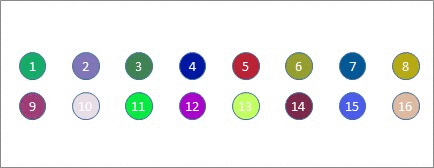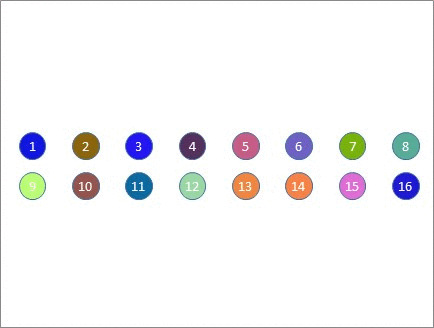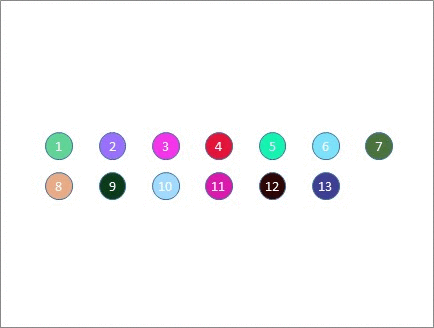In my previous blog, I wrote about how to organize a speed networking event for large groups using simple rules and prime numbers. This applies to networking events which are organized around tables. Another popular model, and one closer to the idea of speed dating, is to set up two rows of chairs facing each other, and to have people speak one on one for 60 seconds at a time, before moving on to the next encounter. A bit like this...

This works perfectly well of course, except that you only get to meet half the people in the room - which is possibly OK if you're speed dating, but less satisfactory when your goal is to meet as many of the participants as possible. So after you've met everyone on the opposite facing chairs - what do you do next?
This is a situation which arose at a meeting I attended a couple of years ago. There was plenty of time available, people realised?that they'd only met half the attendees, but the organizer didn't quite know how to proceed, and what actually followed simply didn't work.
For future reference - a perfectly reasonable solution is as follows.
The first thing to realise, is that in the above diagram, everyone in the top row has met everyone in the bottom row, but no-one else in the top row. And the same is true for everyone in the bottom row. So why not separate the two rows, and organize two parallel speed-networking events - one for the people in the top row, ?and one for people in the bottom row. And when THOSE speed networking meetings have completed, repeat the process again, and organize four parallel speed-networking events for the remainder. For 16 participants, one final 4th set of 8?meetings will ensure everyone has met everyone, but I won't object if you stop before then.
Here's an animation of exactly this process for 16 participants...

Admittedly, you don't get convenient powers of two very often, so what are you to do when you have to deal with odd numbers? It's really not much more complicated. It just means that you set out an empty chair (to make up the even number), and have a person who takes a rest - or talks to the empty chair if they prefer. Everyone will do that at some point. Here's an example with 13 people, which runs into odd numbers all the time...

So the next time you find yourself wondering how to shuffle people up after a first round of speed networking - split them in two!
Footnote: These animated GIFs were assembled from individual frames using the free Animated GIF Maker at (http://gifcreator.me/). The individual frames were generated with Excel software written specifically for these blog articles.

